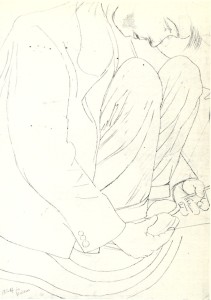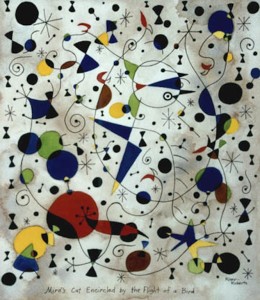Lesson 34
Scale
The word ‘scale‘, when speaking of paintings, is often used when it is simply ‘size‘ that is being referred to.
Such as – “I like the scale of these paintings“, when it is clearly the size of the painting that is being appreciated.
It would be wrong to comment on the scale of, say, a Jackson Pollock when you are only commenting on how big it is.
Scale is not the same as size. Scale refers to the internal proportions of elements in a painting. Scale is always relative, it is to do with ratio, the proportional relationship of the elements in a painting and the relationship to the rectangle that contains them.
For instance, a small Stanley Spencer drawing can be monumental in scale. Small in size yet the subject is enormous in scale. This is to do with the proportions of the subject in relation to the rectangle of the drawing.
Scale can often be ambiguous, particularly when there is no human element that would establish a recognisable reference, though the substantially ‘full size’ figures in a Francis Bacon painting would leave little possibility for any ambiguity of scale.
However, in Miro – this other world of whimsical forms can be appreciated for the actual size of the painting, as a thing in its own right and self-referential, or as a view of a microscopic world or cosmic world, that of a part of a gigantic universe.
Lesson 34: Make a small painting that is also monumental in scale, or a painting where the scale of what it depicts is unclear and ambiguous in that it could be very small or very big.
This entry was posted on Thursday, December 8th, 2016 at 10:50 am
You can follow any responses to this entry through the RSS 2.0 feed.


